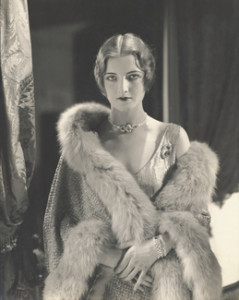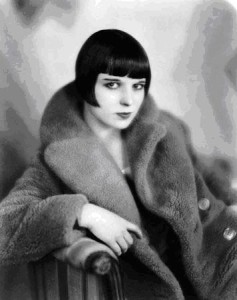Fur Perfumes
One of the aspects that I most enjoy about vintage perfumery (aside from the obvious enjoyment of the scents themselves) is the exploration of different historical and cultural trends and the influence they had on any particular creations. Similar to trends in fashion, perfume houses and noses were often seen to develop variations on a fragrance theme, usually sparked by some scent innovation or indeed the discovery of a new fragrance substance, not unlike the way Thierry Mugler’s Angel spawned countless imitators. The post-war 1920s were certainly no exception and indeed the era witnessed the creation of entirely new subcategories in perfumery. While some of these, notably the Russian Leather or Cuir de Russie, are still available today, there are others which did not survive the passing of their era. Among these is a category of perfumes based on a series of accords which would give the impression and scent of fur, and indeed was often used to perfume fur stoles or collars, several of which utilized the name faun in their title, a reference to the mythological Satyr.
While the mention of fur today sparks a variety of social, political and often visceral reactions, fur had long been used by humans out of necessity as a means of warmth and occasionally even shelter, later evolving to a symbol of status and wealth. While the more “democratic” fashion trends for women in the 1920s represented a distinct departure from the lavish and elaborate Belle Epoque style, it was not completely without its opulent trappings. Flappers often adorned their slim silhouettes with cloche hats and fur coats and wraps, accessories that would come to identify the youthful exuberance and excesses of the Jazz Age. Women sought and to some minor degree achieved a level of emancipation never before seen and they were eager to flaunt it, by smoking, dancing and reveling, fairly innocent activities things modern women take for granted.
This desire for liberation was reflected in several perfume styles of the era, as though deliverance could be achieved by the use of a provocative perfume. As a side note, I find it fascinating that while women today have arguably achieved greater social autonomy, there appears to have been a fragrance backlash, a sort of re-trenching phenomena taking women back to the days when the ultimate goal was simply to smell pretty without provocation or intellectualization. In this light, the inverse relationship between a fragrance’s character and that of its wearer are puzzling, as though the woman is apologizing for autonomy.
The Faun is a Greek mythological figure characterized as being half-man and half-goat, possessing qualities of each. The Faun, a companion of both Pan and Dionysus, is often represented in pastoral settings playing a flute or a small set of pipes, a hybrid creature bridging the human and natural worlds. As a companion of Dionysus, the Faun is understandably a devotee of wine, women and sensual pursuits, presumably with the forest nymphs with which they are frequently depicted. Needless to say, the use of “Faun” in the name of a fragrance is intentional and meant to invoke various connotations, alluding to a certain playfulness which conceals an animal and even sexual nature.
Over the next series of posts, I will be exploring various fur perfumes, a deep and animalic fragrance category which is not afraid to reveal its sensuality.


